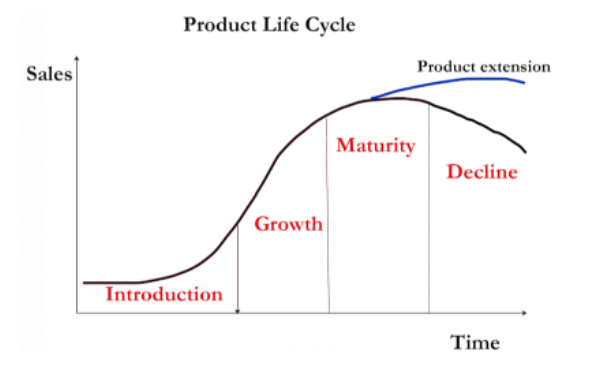Product Life Cycle Management
A product is believed to go through definite life stages within the same manner as a living organism. Product are first introduced within the market and customers settle for if they notice them serving their desires, sales go quickly. Finally, everyone who desires the product acquires it and sales highland. At some stage, either the want for product was satisfying to see to exist, or a different solution to that need emerges. An organization that introduces new product naturally hopes that the product will contribute to supply customers satisfaction for a longer amount of time.
On reality basis this does not happen, so progressive organization tries to stay aware about the sales & market relation of product with customers.
A product life cycle is that the amount of time a product goes from being introduced into the market until it’s commenced the shelves. The concept of product life cycle helps inform business decision-making, from pricing and promotion to expansion or cost-cutting.
Theodore Levitt (1965), a well-known marketing management thinker has created his ideas in the basic concept of the life cycle of the product.
Levitt idealize the concept of the product life cycle as:
1. Products have a limited life span
2. The sales and consumptions passed through distinct stages, each poses different challenges, opportunities, and problems to the sellers.
3. Profit rise and falls at different stages of the life cycle of products.
4. Product required different marketing financial, manufacturing, purchasing and human resource strategy in each stage of their life cycle.
There are many factors affecting the life-cycle of a product. Joel Dean (Father of Managerial Economics) said,
“The length of the product life-cycle is governed by:
- The rate of technical change
- The rate of market acceptance
- The case of competitive entry.”
There are four stages during a product’s life cycle—introduction, growth, maturity, and decline.

1. Introduction/Development stage: Once a product has been developed, it begins the introduction stage of the PLC. In this stage, the product is released into the market for the first time. During the introduction stage, marketing and promotion are at a high, and the company often invests quite a bit of effort and capital in promoting the product and getting it into the hands of consumers. In this stage the product is new and the customer acceptance is low and hence the sales are low.
2. Growth stage: During the growth stage, consumers have accepted the product in the market and customers are beginning to truly buy in. The growth stage is when the market for the product is expanding and competition begins developing. Potential competitors will see your success and will want in. Here knowledge of the product and its capabilities reaches to a growing number of customers.
3. Maturity stage: The maturity stage is when the sales begin to level off from the rapid growth period. This means that product features might be enhanced, prices might be lowered, and distribution becomes more intensive. During the maturity stage, products begin to enter the most profitable stage. The cost of production declines while the sales are increasing. The product is widely acceptable and sales are now stable, and it grows with the same rate as the economy as a whole grows.
4. Decline stage: Although companies generally attempt to keep their product alive in the maturity stage as long as possible, eventual decline is inevitable for every product. This decline that generally follows could be due to reseeds such that consumers changes in taste and preferences improvement in technology or introduction of better substitute. In the decline stage, product sales drop significantly, and consumer behaviour changes, as there is less demand for the product.
These four stages can be summarized in different sector like sales, marketing, pricing and competition.

PLC analysis is a method of purposefully examine a product and creating strategic style, pricing, and marketing decisions to optimize the product for every stage of its life cycle. Conducting PLC analysis will facilitate firms verify if their product are servicing the market they target efficiently so that new strategies can be introduced.
Examining their products life cycles – can help firms verify if they have to develop new products to continue generating sales, particularly if the bulk of their product are in the maturity or decline stages of the Product Life Cycle.
Popular PLC pricing strategies
1 Price Skimming
Price skimming is a strategy that involves setting the value of a product high at first, then lowering it to “skim” additional groups of customers as the market expands. Once it is launched the pricing is set high and it gets introduced to customers who are willing to pay for latest products. After it fulfils the demand of this group, the price is lowered to attract demand from new, price-sensitive group of customers.
2. Price Penetration
Price penetration is a strategy that involves setting the initial price of a product low to penetrate the market as quickly as attainable. This strategy helps build client awareness, that will increase demand. The product’s pricing is increased as demand for it grows.
Conducting PLC analysis can help companies learn when they need to reinvent their product or pivot it in a new direction. For example, online streaming service Netflix pivoted their product by transitioning away from their DVD-delivery service and toward streaming movies and television series directly online, which was met with great success.
By Aman Tembhekar

